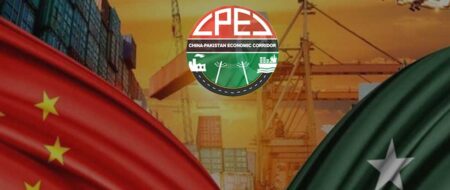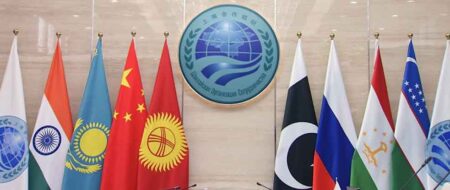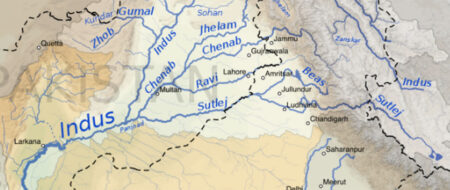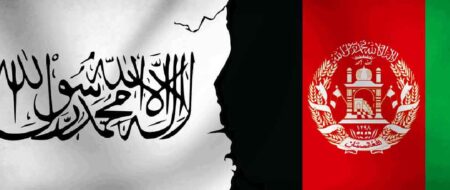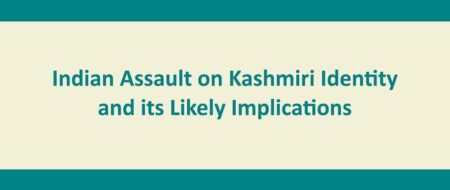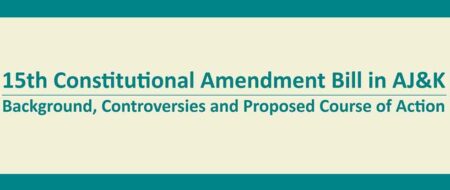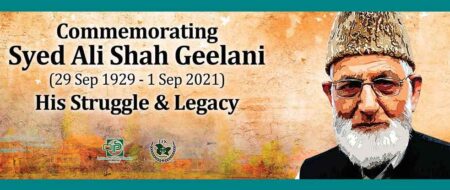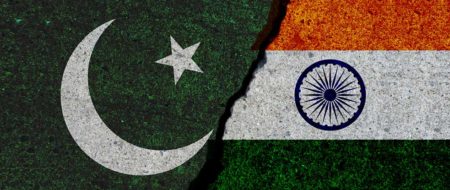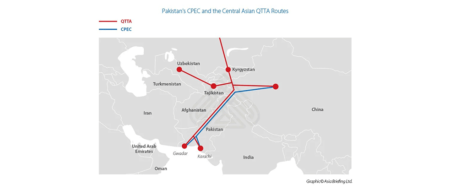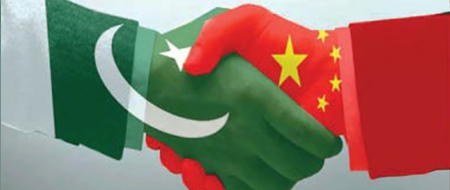Iran’s Nuclear Program: The Deal, Prospects and Implications
Transcript of the presentation by Dr. Nazir Hussain, Associate Professor, School of Politics and International Relations, Quaid-i-Azam University, Islamabad, at the seminar titled “Iran’s Nuclear Program: The Deal, Prospects and Implications” held at Institute of Policy Studies, Islamabad, on September 24, 2014.
Transcript of the presentation by Dr. Nazir Hussain, Associate Professor, School of Politics and International Relations, Quaid-i-Azam University, Islamabad, at the seminar titled “Iran’s Nuclear Program: The Deal, Prospects and Implications” held at Institute of Policy Studies, Islamabad, on September 24, 2014.
ِ
First of all, I take this opportunity to thank Institute of Policy Studies, especially, Mr. Khalid Rahman, DG IPS and Khalid Iqbal, the chair, for providing me this forum to discuss one of the burning issues in global politics. One thing which needs to be clarified is that this talk was long overdue. Actually, this was due in August but the political sit-ins did not allow us to hold it timely. Moreover, the situation regarding the topic is changing very rapidly day by day.
On September 21, 2014, John Kerry, the US Secretary of State met Iranian Foreign Minister, Javad Zarif, in New York on the sidelines of the UN General Assembly, unfortunately the sticking point is not nuclear, it is the IS [Islamic State]. Dynamics have changed suddenly. I will come to these points later. Second, again on the sidelines of UN General Assembly, Prince Saud Al-Faisal, Saudi Foreign Minister, met Javad Zarif, the Iranian Foreign Minister which is a good omen for reestablishing peace and security in the region.
I would discuss two important aspects which are never discussed; what is the Iranian decision making prism and how does it work? How many groups are there and what are their positions on this very sensitive issue? And later, of course we will talk about the deal, extended deal, the prospects and the implications of the deal.
Introducing the subject
The evolution of Iranian nuclear program is benefited by the US ‘Atom for Peace program.’ Founding of Islamic regime in 1979 brought a sea-change. The nuclear controversy started in 2002, when it was revealed that Iran has certain secret nuclear facilities. However, Iran denies that it has any version of a nuclear weapon pursuit; first in 2003 current Rahbar [Supreme Leader] of Iran, Ayatollah Ali Khamenei described that due to its religious principles, Iran would never use weapons of mass destruction. President Hassan Rouhani, also recently stated that “nuclear weapon has no place in Iran’s security doctrine.” Moreover, there were two important benchmarks: one, Iran will go nuclear in 2013 but the year passed peacefully, and nothing happened; second, Iran will go nuclear in 2015, which remains to be unfolded in the future. The point is, if ever Iran wants to go nuclear it can easily withdraw from the NPT through Article X, as North Korea did. But so far it has shown no intentions of going nuclear. After the controversy, there was an additional protocol to the treaty and a sanction regime was initiated in 2006; six different resolutions by the UNSC were passed.
The important point is there are several stakeholders but there is no homogeneity within the stakeholders. There are also three stakeholders within Iran itself. There are three key decision makers: China and Russia, Iran, and the West. Whereas within Iran there are also three stakeholders. It is also worth mentioning that Iran did not negotiate directly with the United States. It was the EU-3 and then P5+1. Within the GCC countries, Saudi Arabia and certain other countries are on the one side, while Oman and UAE are on the other; which further translates into diversions among these stakeholders. Even in Israel there is not one view, there are several/multiple views on how to deal with the Iranian nuclear program; should Israel go for a peaceful negotiated settlement or should it opt for an attack.
Understanding Iran’s decision-making prism is very important. The role of religious clergy in Iran is very crucial, in this context. It dates back to Zoroastrianism, when the Zoroastrian clergy exercised great influence over decision-making in Iran; even today, clergy holds an eminent position. Moreover, in Iran the credential of the decision maker must have two basic linkages: one through clergy and other through IRGC. The current decision-making is based upon four different institutions, not individuals; the Rahbar, the president, the Supreme National Council and the Majlis. The current Rahbar is Ayatollah Khamenei; every student of International Relations knows that what Ayatollah’s position is in Iran, socially, politically, economically and strategically, he is the last word in Iran. President Hassan Rouhani is a moderate but one must know that Rouhani has a credential of 23 years in the Iranian decision-making; he has served as the member of IRGC and secretary of the Supreme National Security Council as well as the chief negotiator on nuclear issues for three years. Presently, the secretary of Supreme National Security Council and former defense minister, Ali Shamkhani, is President Rouhani’s nominee. He was appointed in September 2013. One must know that unlike Rouhani, he is a hardliner. Lastly, the Majlis speaker, Ali Larijani, also holds one of the segments in the current parliament.
There are three schools of thought involved in Iranian decision making: radical, conservative and moderate. The radicals, who are headed by Larijani and Shamkhani, see inherent enmity between Iran and the West and therefore, they believe that negotiation is synonymous with defeat. They maintain that through negotiation process, the West wants to incapacitate Iran and force their own way. Then, the conservatives are led by Khamenei, they believe that the United States will never abandon its hegemonic policies in the world. However, despite suspicion, they believe that negotiation is one of the options so they are not out-rightly rejecting the negotiations, like the radicals. Nevertheless, the moderates, including Rafsanjani, Khatami and Rouhani, two former and the current presidents support negotiations. At the same time, they believe that the United States and the West are very hostile. The moderates are of the view that Iranian and the US interests are coinciding presently, regarding IS. All these groups, despite the differences in ideologies, have a key role to play in the decision-making in Iran.
On the other hand, there are several European and American corporations companies eager to invest in Iran. The estimations are expected even to the tune of 100 billion dollars, in pharmaceutical, oil, energy, infrastructure, aerospace, etc., as Iran’s resources are depleting gradually, for the last 20 years. These companies are also waiting for the sanctions to be lifted, in order to begin investment.
What course of action Iran will adopt; to analyze this, one needs to consider the underlying patterns of Iran’s foreign policy. Basically, President Rouhani’s three foreign policy traits have been discussed in Zarif’s article, which appeared in Foreign Affairs last summer, based on the testimony to the Majlis for his confirmation as foreign minister, where he spoke about of Mr. Rouhani’s foreign policy agenda. These traits are “prudent moderation”, “constructive engagement” and “heroic flexibility”; heroic is added although flexibility has been shown. So these traits, to some extent, determine the course of Iran’s foreign policy.
Therefore, these are the groups and factors within Iran involved in the decision-making. It is not consensus decision-making. Moreover, Iranian Majlis like the US congress, also wants a share in authority by supervising the negotiations.
Let us come to three critical assumptions. The Islamic Republic of Iran, one must remember, is inheritor of Shah’s nuclear ambitions. The US-based Stanford Institute had predicted in 1973 that Iran needs 20,000MW of energy by year 1991. It is now controversial. Iran is not developing nuclear weapons but it has ‘red lines’. Now, the question is if Iran is not developing nuclear weapons then why Iran is in pursuit of this nuclear energy.
Here, we have to understand three things first, the Iranian nationalist approach for, Iran is a civilization dating back to 500 BC; the long history of 2500 years has built the psyche of national thinking. Second, case of North Korea’s example for Iran. North Korea was also persuaded to dismantle its nuclear program in 1995. Consequently, an agreement was signed in 2005 that North Korea will dismantle its nuclear program and will be provided with 250 million dollars. It did not materialize. Then North Korea withdrew from NPT and conducted a nuclear test. Third, is the example of Libya. The entire Libyan nuclear program was dismantled in 2003 and later Libya was swept by an unending chaos as a consequence. So Iran does not want to face the same situation, in which Libya finds itself today.
Iran has been engaged with the international community since 2002. Iran signed 2003 additional protocol but did not ratify it. The IAEA inspectors continue to supervise and conduct inspections and since 2002 IAEA issued 30 different reports. So, Iran is engaged with the international community but of course the sensitivities are there.
The Joint Plan of Action was outlined after six rounds of negotiations. It came into force in January 20, 2014. It needs to be understood in an academic perspective where Iran gave in and where P5+1 allowed flexibility:
• Iran would halt uranium enrichment to 5% which has reached to 20%.
• Dismantle enrichment equipment above 5%.
• Refrain from further enrichment of 3.5% of stock piles.
• Limit the use and installation of the centrifuges.
• Freeze construction of Arak nuclear reactor.
• Provide daily access to the inspection to their two facilities at Arak and Fordow.
In lieu of all this, they were promised to easing of sanctions, not removal, and unfreezing of 4.2 billion dollars which are Iranian assets in different banks. Actually, looking from the Iranian perspectives, nuclear program was halted just to retrieve 4.2 billion dollars. However, soon after the agreement there were varying interpretations: 1) Iran believes that by agreeing for less than 5% of enrichment, its right of peaceful activity has been accepted and 2) lifting of sanctions; however, both were denied by the Americans. Nonetheless, from zero to limited enrichment has been agreed by the P5+1; that means that Iran can enrich up to 5%. Iran’s nuclear program was significantly halted and Iran got the sanctions’ relief, not removal. So this was the actual deal which was signed on January 20, 2014.
Why the deal was extended. The deadline for final agreement was July 20, 2014 which was not reached due to significant gaps. The deal was extended for further four months precisely from July 21 to November 24. After 16 days of intense negotiations in Vienna, it was Russia, which succeeded in convincing Iran (once again) to agree to continue. What are the major differences?
• Even after doing six or seven actions by Iran, the western states, not Russia and China, fear that Iranian nuclear program is aimed at developing nuclear weapons. Iran denies it.
• The P5+1 want significantly scaling down in nuclear enrichment to make sure that Iran does not go nuclear. But Iran wants all sanctions to be lifted as soon as possible; not easing. But, the West is not willing.
• Iran insists on the right to develop nuclear energy for atomic fuel not for atomic weapons but P5+1 fear that it can lead to making Iran a nuclear weapons state.
These gaps in my view are mainly psychological and indicate trust deficit between the two parties.
As to the prospects of a permanent deal by November 2014, one cannot say categorically yes or no but there are indicators. No one can deny that it is a make or break deal but the situations are not dissimilar to the post. Earlier the negotiations were stalled things got rolling but after also Obama and Rouhani had telephonic conversation. Although the Rahbar had objections on these direct talks but things moved on. Rouhani and Obama in fact displayed political will for talks to continue.
The United States needs Iran now because of the change in the political landscape in Middle East, although it placed new sanctions on Iran against the rules and regulations in the deal claiming that Iran is not cooperating with the IAEA. Two more issues have emerged lately. One, the Western countries have started raising objections on two un-agreed points: Iranian missile program that why Iran is developing missiles and the second objection is on the Parchin nuclear facility, which was not covered under the interim deal. So these are the two new conditions which are not covered under the deal. Western countries and the US claim that Iran is not following IAEA instructions, therefore, new sanctions have been imposed. In response, Iranian leaders raised lot of hue and cry saying that these sanctions would only hinder the dialogue process. Consequently, Iran denied IAEA inspectors the access to the Parchin facility, which is yet in the construction process.
Next, development is related to current US-Russia conflict over Ukraine and now even Russia is under sanctions. So, one can imagine how Russia would play any role in this nuclear deal. Moreover, both Iran and the United States are facing a lot of compulsions. The US Congress wants to put new sanctions but Obama threatened to veto the move. Also, a new factor has emerged in the UNGA session, i.e., the IS factor and importantly Iranians have raised the question as to how the United States can attack IS without the UNSC resolution, whereas the United States believes on the ‘coalition of the willing’ not the UNSC resolutions. There are already talks about Interim-II agreement in different newspaper articles from both sides, if the final deal is not reached by November. It may also be recalled that it was Russians and Chinese who persuaded the Iranians. If Iran is asked to give everything but in return it gets nothing then Iran would step back from negotiations. Therefore, its implementation is not possible by November 2014. Instead, there might be Interim-II or extended agreement. Lastly and more importantly, the UNGA session’s sideline talks have not been serious at all. John Kerry and Javad Zarif met just once in six or seven days and as it appears there won’t be many chances of their meeting once the UNGA session is concluded.
The last dimension is that even if the deal comes through, there remain three fundamental questions: what will be the duration of the deal? Would it be indefinite, like NPT? Secondly, what would be the pace and timing of the sanctions? How these sanctions would be lifted or eased; that will also be crucial. Finally, what will be the outcome of two or three undisclosed or not-under-agreement issues; Iranian missile capability and their nuclear facility at Parchin, Fordow and Arak will also come under question, which Iran will never forego. So even if the deal is made, these are the three crucial issues which have to be discussed along with negotiations. Therefore, it is believed that either the Interim-II is coming or these talks of interim deal would for another six months or so.
Implications. If the agreement goes on, which seems a little bit difficult because of the opposition from Saudi Arabia and Israel, it will close the bitter chapter of Iran-US relations. There will be a relative (not complete) stability in Middle East and of course Afghanistan is in transition and Iran has high stakes there. To be exact, Abdullah Abdullah has very strong linkages with Iranians. It will also open doors for the US and Western corporations which are ready and just waiting for the sanctions to be lifted to invest in Iran. The corporate sector just needs assurance that its investment will be lucrative and beneficial. But if there is no agreement, of course all these will be reversed. Besides, Iran will become more hardline because if will be pushed to the wall and definitely hardliners within Iran will get a center stage while Rouhani will be sidelined. Iran will continue to build its heavy water facility at Arak, which is going to be operational in 2015. Lastly, Iran will restart enrichment beyond 5% or 20%. So stakes are quite high especially for the West.
Conclusion, I must say that there is a prediction by the CIA and other agencies that Iran will go nuclear by 2013, or 2015. So far 2013 has passed peacefully and the next prediction is for 2015; I believe that even by that time Iran will not go nuclear. The policy of ‘active containment’ has failed and is replaced with ‘active engagement.’ Iran has to be engaged, no other option is available. If it is not engaged, Iran will step back and do whatever it likes. There are very high costs of failure because Iran is being pushed to go nuclear. The US’ Middle Eastern allies such as Saudi Arabia and Israel are very concerned. About 40 years ago same apprehensions were shown by Japan and Taiwan for China but today they have good relations with China. Same is the case with Iran. Considering the geopolitical position of Iran, the Gulf area it covers is 1500 km right from Shat-al-Arab to the Strait of Hormuz. So why would the United States not wish to work with the Iranians? Oman is already playing that important role. The reservations of Saudi Arabia that it will never ever be attacked from outside are unfounded because of the two religious places situated there therefore the problem in KSA is internal not external. It is good that Saudi and Iranian foreign ministers met recently. One hopes that they can yield something positive in this scenario.
I have two testimonies of the US Congress with me which are not based on reality but mere rhetoric. Unfortunately, they do not reveal facts. Although, there are talks in the United States of that a nuclear Iran would be more responsible, in my view, Iran would not go nuclear in the near future.
Lastly, there might be a status quo or a third party nuclear swap like Russia, Brazil, Turkey offered but unfortunately the US and the West did not agree. There are two things to allay the fears of regional and international powers. One, Iran is ready to declare ME as a NWFZ. Second, Rouhani has offered a security pact between the GCC states and Iran.
There are points for a successful nuclear deal. Both sides have to be careful about the national sensitivities of each other: Iranians, Americans and the Westerns, Chinese and the Russians. There must be mutual respect for each other. There must be a political will and trust on both sides to initiate talks. Finally, transparency and verification mechanism must be very strong. Iran must strive to remove fears of the West that it will not opt for secret nuclear weapons.
[The event was coordinated by Ms. Fatima Habib]



